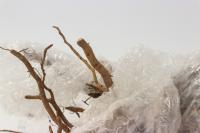1、 Curing method
1. Light: the mountain and sea belt is a plant that likes light and should be given enough sunlight. In summer, it should be shielded from strong light to avoid being exposed to the sun. But don't shade too much, or the leaves will become soft and drooping
2. Temperature: it is a plant that likes high temperature and is suitable for growing in an environment of 20 ~ 28 ℃. It has a little cold resistance, can continue to grow above 10 ℃, and can accept a short-term low temperature of about 0 ℃

3. Soil: it has no requirements for soil. It's best to use soft acid soil with strong drainage capacity for maintenance. The soil should be disinfected before use
4. Moisture: it can be watered once or twice a week in spring and summer, and once every 3-4 days in autumn. In winter, after it enters the dormancy period, it can be watered once a week

2、 Breeding skills
1. Basin changing: the basin should be changed after two to three years of maintenance, because the permeability of the soil will become poor if the time is too long. When changing the pot, replace the soil again, take off the pot without damaging the root, and re cultivate it
2. Propagation: the mountain and sea belt can be propagated by sowing method, and the temperature should be kept at about 20 ~ 25 ℃ during sowing. Buy a better quality seed, sow it evenly, and it will germinate in 15 days

3、 Diagnosis and treatment problems
1. Leaf spot: at first, the leaves will have black spots, and the spots will continue to expand, resulting in dry leaves. When pruning diseased leaves, spray medicine at the same time. Chlorothalonil or carbendazim can be used for control
2. Leaves are soft: This usually happens because you don't get enough light or less fertilizer. It should be given plenty of sunshine and appropriate fertilizer

4、 Other issues
1. Whether it can be cultured indoors: it likes sunshine, but it can also be cultured indoors, but it should choose a place with good light
2. Edible: the information of mountain and sea belt shows that it is not toxic, but don't eat it. Just keep it at home for good maintenance


 jackfruit
jackfruit snake plant
snake plant hibiscus
hibiscus hydrangea
hydrangea lavender
lavender Green roses climb al...
Green roses climb al... If you don't pay att...
If you don't pay att... Management of four g...
Management of four g...

































